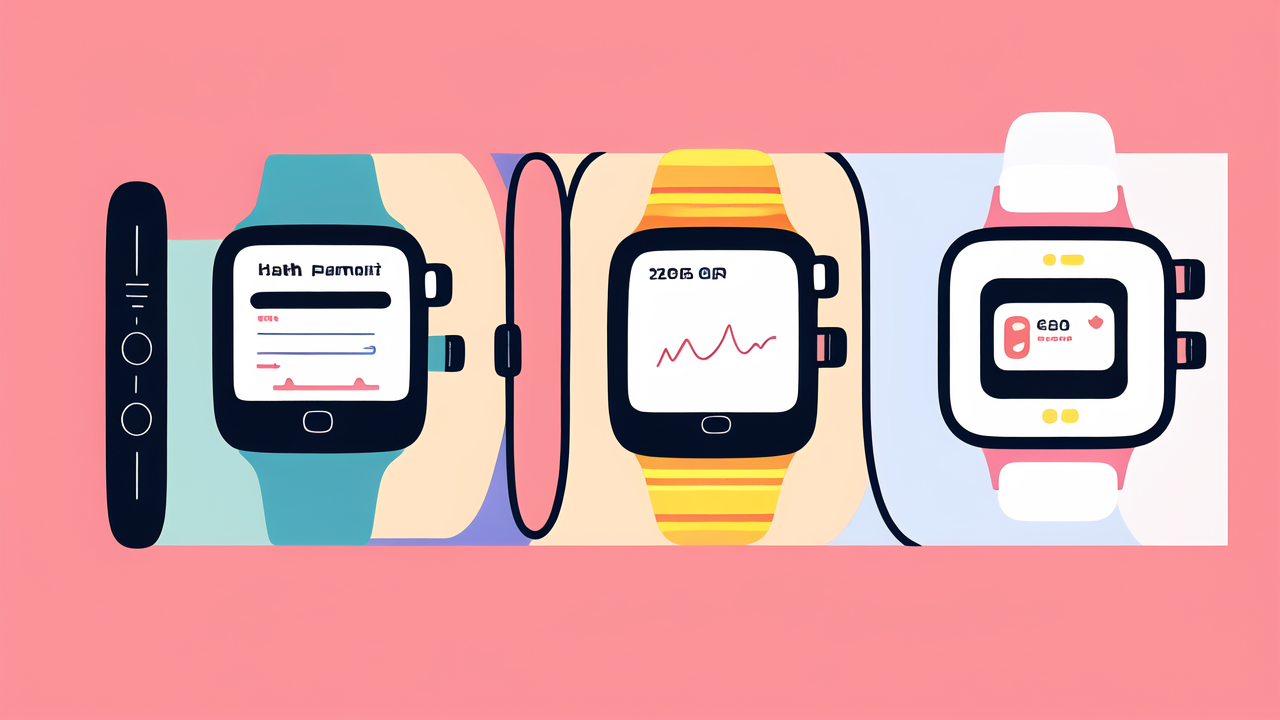The History of Smartwatches and Their Impact on Modern Lives
The Advent of Smartwatches in the United States
Smartwatches first appeared in the US in the early 2000s. They were basic, with limited features. Early models could store contacts and do simple calculations. As technology advanced, so did smartwatches. By 2010, they could connect to smartphones. This allowed for more functions, like notifications and music control. The real boom came with the Apple Watch in 2015. It set a new standard for what a smartwatch could do. Since then, the US market has seen rapid growth in smartwatch adoption.

Key Milestones in the Development of Smartwatches
The journey of smartwatches has been marked by several key milestones:
- 2000: IBM releases the first Linux-based smartwatch
- 2004: Microsoft introduces the SPOT smartwatch
- 2012: Pebble launches its e-paper smartwatch via Kickstarter
- 2013: Samsung releases the Galaxy Gear
- 2015: Apple debuts the Apple Watch
- 2017: Fitbit launches its first smartwatch, the Ionic
- 2019: Hybrid smartwatches gain popularity
Each milestone brought new features and capabilities. They paved the way for today's advanced wearables.
How Smartwatches Have Changed the Way We Tell Time
Smartwatches have revolutionized timekeeping. They've made it more than just about knowing the hour. Now, we can track our sleep, steps, and heart rate. We can read messages and make calls from our wrists. Smartwatches have made time management more efficient. They remind us of appointments and help us stay on schedule. For many, checking the time now means glancing at a wealth of personal data. This shift has made timekeeping more personal and interactive than ever before.
Analyzing the Current State of the Smartwatch Market
The Top Smartwatch Brands and Their Market Share
The smartwatch market is dominated by a few key players:

- Apple: Leads with about 30% market share
- Samsung: Holds around 10% of the market
- Fitbit: Captures about 5% market share
- Garmin: Has a strong presence in the fitness segment
- Fossil: Popular for its hybrid smartwatches
Other brands like Huawei and Xiaomi are gaining ground, especially in Asia. The market is competitive, with new players entering regularly. Innovation and brand loyalty play crucial roles in maintaining market share.
Consumer Trends: What Drives Smartwatch Adoption?
Several factors are driving smartwatch adoption:
- Health and fitness tracking
- Convenience of notifications and quick responses
- Contactless payments
- GPS and navigation features
- Style and customization options
Consumers are looking for devices that seamlessly integrate into their lives. They want smartwatches that are both functional and fashionable. Battery life is also a key concern. As smartwatches become more capable, users expect them to last longer between charges.
The Role of Health and Fitness in Smartwatch Popularity
Health and fitness features have become central to smartwatch appeal. Many users buy smartwatches primarily for these functions. Common features include:
- Heart rate monitoring
- Step counting
- Sleep tracking
- Workout tracking
- Stress level monitoring
Some advanced models now offer ECG and blood oxygen level monitoring. These features are attracting health-conscious consumers. They're also making smartwatches valuable tools for managing chronic conditions. As health tech improves, smartwatches are becoming important health management devices.
The Future of Smartwatches: Predictions and Innovations
Technological Advances Shaping the Future of Smartwatches
The future of smartwatches looks exciting with several technological advances on the horizon:

- Improved battery life through new power-efficient chips
- Advanced health monitoring, including blood glucose and blood pressure tracking
- Integration of AI for personalized health insights
- Enhanced displays with flexible and foldable screens
- 5G connectivity for faster data transfer and independent internet access
- Improved voice recognition and natural language processing
These advances will make smartwatches more powerful and useful. They'll be able to do more without relying on smartphones. This could lead to smartwatches becoming primary devices for many users.
Potential Market Growth and Emerging Consumer Segments
The smartwatch market is expected to grow significantly in the coming years. Analysts predict a compound annual growth rate of over 20% through 2025. Emerging consumer segments include:
- Seniors: For health monitoring and emergency alerts
- Children: For location tracking and communication
- Corporate users: For productivity and security features
- Healthcare professionals: For patient monitoring
As prices decrease and features improve, smartwatches will become more accessible. This will open up new markets in developing countries. The integration with IoT devices will also drive adoption in smart homes and cities.
Ethical and Regulatory Considerations in the Smartwatch Industry
As smartwatches collect more personal data, ethical and regulatory issues are coming to the fore:
- Data privacy and security concerns
- Accuracy of health monitoring features
- Regulatory approval for medical-grade functions
- Digital well-being and screen time management
- Accessibility for users with disabilities
Manufacturers will need to address these issues to maintain consumer trust. Regulators are likely to introduce new guidelines for smartwatch data handling. The industry will need to balance innovation with responsible data practices. This will be crucial for the long-term success and acceptance of smartwatches.




Leave a comment
This site is protected by hCaptcha and the hCaptcha Privacy Policy and Terms of Service apply.